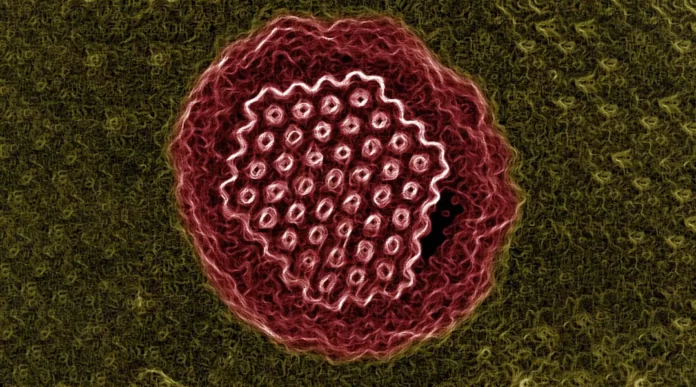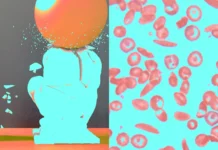Ancient viruses can provide us with a unique insight into our past and the potential to better prepare us for the future. But how do we bring these ancient viruses back to life? In this blog post, we will explore what ancient viruses exist, how to bring them back to life, and what the implications of reawakening ancient viruses are. By the end of this post, you should have a better understanding of the process and potential of bringing ancient viruses back to life.
What Ancient Viruses Exist?
There’s a lot of interest in ancient viruses, and for good reason. They are a fascinating group of viruses that have been around for millions of years. By studying these viruses, scientists hope to gain a better understanding of how viruses work and how they can be used to shape the future. Below, we’ll take a look at some of the different types of ancient viruses that have been discovered and the techniques being used to revive them.
Ancient viruses can be divided into two categories: extinct virus and extant virus. Extinct virus is a term used to describe ancient viruses that no longer exist in nature. extant virus, on the other hand, refers to any type of ancient virus that is still alive in some form. Scientists are currently working to bring many extinct viruses back to life, but there is also potential for reviving extant viruses.
The potential benefits from studying ancient viruses are vast. By understanding how these viruses work, scientists can develop new methods for fighting diseases or protecting people from infection. Additionally, by studying extinct viral strains, scientists may be able to develop vaccines or treatments that were not possible before. However, there are also risks associated with reviving ancient viruses – namely the potential for causing new infections or mutations in existing organisms.
Techniques being used to revive ancient Viruses include using genetic engineering and recombinant DNA technology. Genetic engineering involves manipulating genes in order to create new proteins or genes from scratch. Recombinant DNA technology uses pieces of DNA from one organism (such as a Virus) and splices them into another organism (such as a human). This process allows scientists to study viral genes without actually having to create an entire virus replica!
Studying ancient Viruses is important not only because it helps us better understand present-day virulence patterns but also because it provides clues about how future pandemics might unfold.
How Ancient Viruses Can Impact The Future
Ancient viruses are a fascinating topic, and they hold a lot of potential for the future. By studying ancient viruses, we can learn a lot about the development of viruses and the way that they’ve changed over time. This information can help us to better prepare for future outbreaks and understand the origins of certain diseases.
Ancient viruses are incredibly diverse, and they contain elements that are unique to viruses from different periods in history. By studying these viruses, we can learn about how virus technology has evolved over time. This knowledge can be used to develop better treatments or vaccines for future outbreaks.
Although ancient viruses aren’t currently a threat to the general population, it’s important that we remain vigilant. If an unknown virus outbreak were to occur, understanding ancient viruses could make it easier to identify and respond to this situation quickly and effectively. In addition, research into ancient virus could provide insights into developing potential treatments or vaccines for current diseases. There’s no limit to what Ancient Viruses Could Tell Us!
How Do You Bring Ancient Viruses Back To Life?
Ancient viruses are viruses that are over 2,000 years old. These viruses have the potential to cause serious illness, and scientists are interested in reviving them in order to study them and see if they pose a risk. However, before any ancient viruses can be revived, researchers need to understand what they are and how they work.
Ancient viruses are made up of genetic material that is similar to modern viruses, but it is often compressed or changed in some way. This makes it difficult for scientists to study ancient virus completely, but it also makes them potentially more dangerous because their DNA may not be resistant to common antibiotics.
To revive ancient viruses, scientists first need to isolate the virus from a sample. This can be done using a variety of methods, including organic or viral lab cultures or even simple blood samples. Once the virus has been isolated, researchers can begin to study it by doing experiments on cells or animals. This information will help them better understand how ancient viruses work and how they could potentially cause illness if revived.
There is still some debate surrounding the potential risks and benefits of reviving ancient viruses. However, research into this area is ongoing, so we may learn more about the potential dangers as time goes on. In the meantime, scientists are taking precautions such as wearing protective gear when working with these dangerous pathogens and following strict safety protocols when trying to revive an ancient virus.
What Are The Implications Of Re-Awakening Ancient Viruses?
Millions of years ago, viruses were rampant throughout the Earth. Some of these viruses have remained dormant for millions of years, and now scientists have discovered a way to bring them back to life. This new technology has the potential to be used for the benefit or detriment of humanity. On one hand, scientists could use this technology to help researchers study ancient viruses that have never been studied before. This could lead to new insights into how viruses work and how they can be destructive.
However, there are also concerns about what might happen if ancient viruses were unleashed into the environment again. For example, some of these viruses could cause new pandemics that would affect vast numbers of people. There is also a risk that these newly awakened viruses might spread from place to place quickly, leading to massive casualties.
There is a need for regulation and oversight when it comes to working with such powerful new technologies. Without proper safeguards in place, disaster could strike at any time. It is important that scientists take all necessary precautions when working with ancient viruses in order to avoid any negative consequences for humankind or the biosphere as a whole.
Conclusion
Ancient viruses provide us with a unique opportunity to learn about our past and prepare for the future. We have explored what ancient viruses exist, how to bring them back to life, and what the implications of reawakening them are. While there is potential for great benefits in studying these ancient viruses, it is also important to be aware of the risks associated with reviving them. It is essential that scientists take all necessary precautions when working with such powerful new technologies in order to avoid any negative consequences for humankind or the biosphere as a whole.












